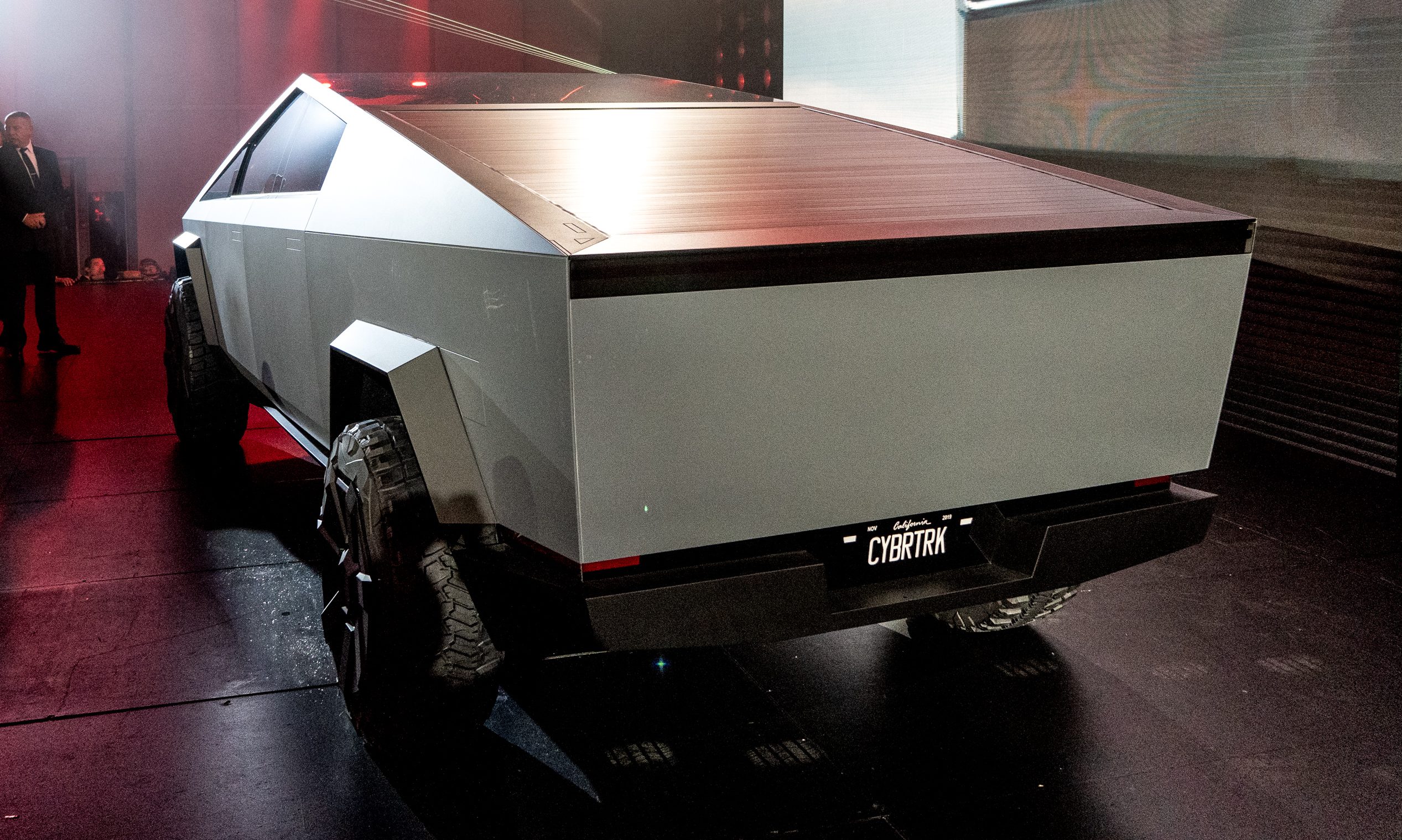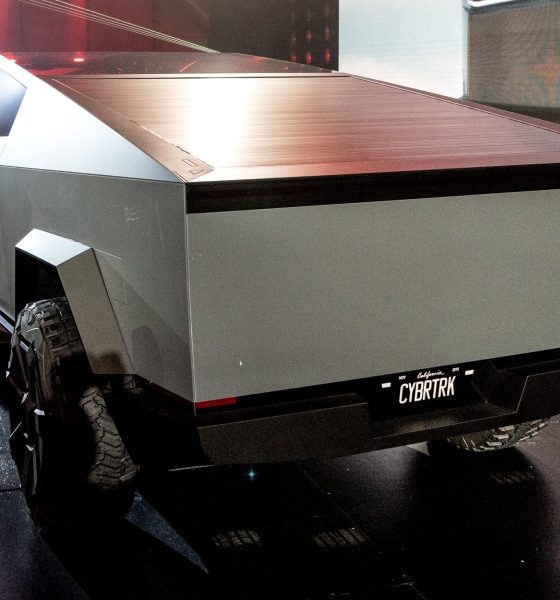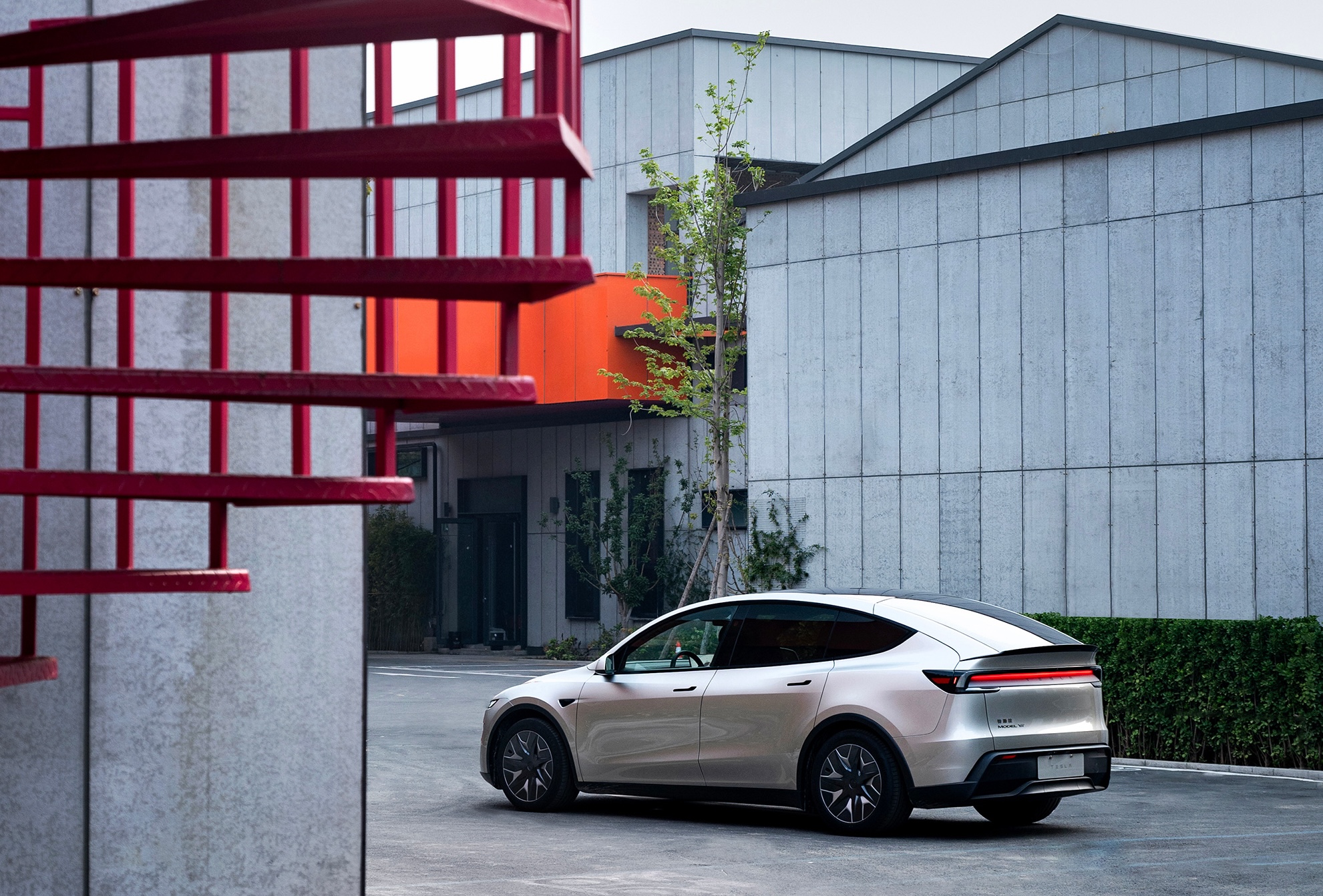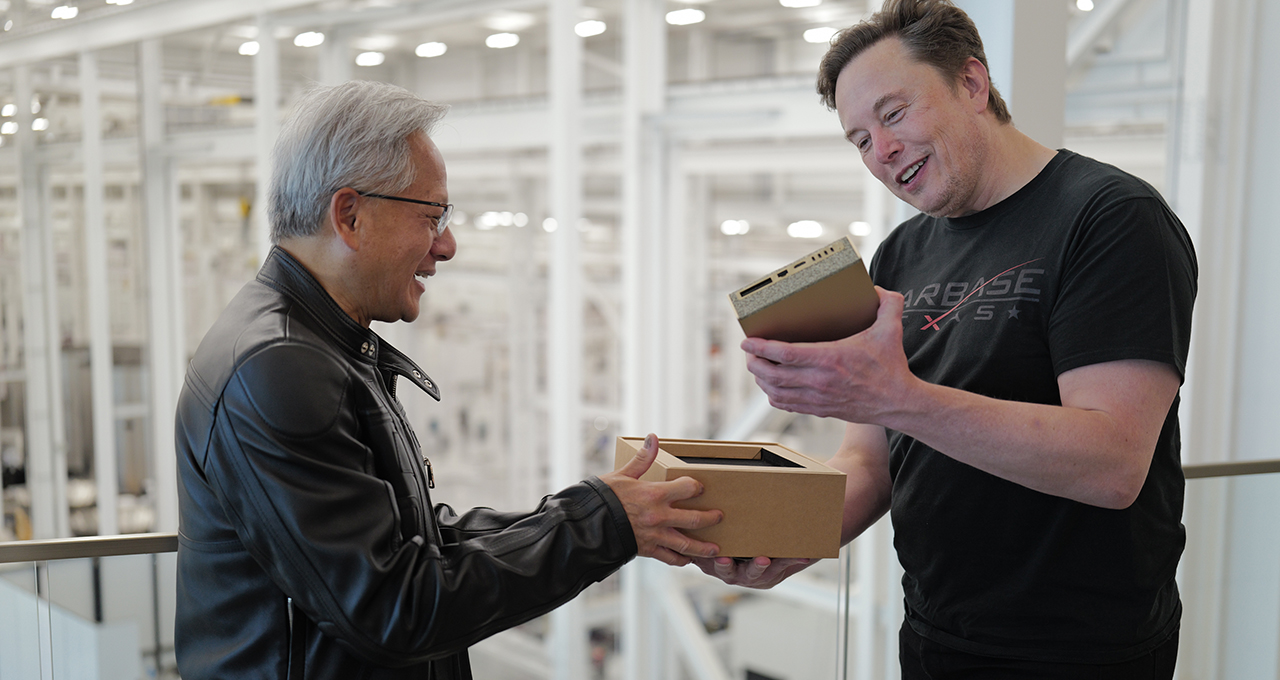

News
Tesla adds solar panels to Cybertruck for daily range boosts
Tesla’s Cybertruck may be as polarizing as Elon Musk previously suggested, but its combination of affordable price, killer specs, and crazy performance makes it a rather unusual-looking yet potentially formidable entry into the pickup truck segment. Yet, amidst all these capabilities, it appears that Tesla is also looking to make its pickup as the ultimate vehicle for camping and overlanding.
Images of the Cybertruck released online show that the vehicle will have an attachment that transforms the pickup into a camper, complete with a small kitchen and a table. Looking at the image shared by Tesla, it appears that the company has included as many features as it can into the Cybertruck, except the kitchen sink. Considering Elon Musk and Tesla’s tendency to adopt some humor in their creations, it would not be too farfetched if later iterations of the Cybertruck’s portable kitchen ends up getting an actual working sink.
Vehicles that engage in activities such as camping or Overlanding tend to stay in one location for several days. This means that if the Cybertruck were to be used for such purposes, the vehicle will likely remain parked in an outdoor location for extended periods. Tesla, if Elon Musk’s recent tweets are any indication, actually has a plan for this, with the CEO stating that the Cybertruck’s rear will have a Solar Powered tonneau cover, allowing the vehicle to recharge its batteries while it’s exposed to the sun.
The Tesla CEO provided some details on this design element in a response to a Tesla Model 3 owner on Twitter. In his response, Musk stated that Tesla will introduce an option to add solar power to the Cybertruck, allowing the massive pickup to generate about 15 miles of range per day on its own. Fold-out solar wings could also be added later, which would generate about 30-40 miles of range per day. This, according to Musk, actually covers the average miles per day traveled by drivers in the United States.
Musk’s recent tweets suggest that Tesla’s Cybertruck is a vehicle that has been a long time coming. By providing the Cybertruck with a way to generate power on its own (albeit in limited quantities), the addition of a built-in PV system into the pickup would enable the vehicle to gain more range as it stays parked in an outdoor spot. Such a system could even be useful for homeowners whose Cybertrucks will be parked at the driveway, where the vehicles will likely be exposed to the sun on a regular basis.
Elon Musk has stated multiple times in the past that the Tesla Cybertruck would be a polarizing vehicle that looks like it came out of the set of the Blade Runner franchise. Its design suggests that this was the case. That being said, the pickup is very impressive, with its ultra-hard stainless steel exoskeleton, Tesla Armor Glass, a 0-60 mph time of 2.9 seconds for its top trim, up to 500 miles of range per charge, and a premium, tri-motor AWD variant. Yet, for all its special features and unique look, the Cybertruck is very aggressively priced, with the base variant starting at a very reasonable $39,900.

News
Tesla extends FSD Supervised ride-alongs in Europe by three months
Needless to say, it does appear that FSD fever is starting to catch in Europe.

Tesla appears to be doubling down on its European Full Self-Driving (Supervised) push, with the company extending its demo ride-along program by three months until the end of March 2026. The update seems to have been implemented due to overwhelming demand.
Needless to say, it does appear that FSD fever is starting to catch in Europe.
Extended FSD demonstrations
Tesla EU Policy and Business Development Manager Ivan Komušanac shared on LinkedIn that the company is offering ride-along experiences in Germany, France and Italy while working toward FSD (Supervised) approval in Europe.
He noted that this provides a great feedback opportunity from the general public, encouraging participants to record and share their experiences. For those unable to book in December, Komušanac teased more slots as “Christmas presents.”
Tesla watcher Sawyer Merritt highlighted the extension on X, stating that dates now run from December 1, 2025, to March 31, 2026, in multiple cities including Stuttgart-Weinstadt, Frankfurt and Düsseldorf in Germany. This suggests that the FSD ride-along program in Europe has officially been extended until the end of the first quarter of 2026.
Building momentum for European approval
Replies to Merritt’s posts buzzed with excitement, with users like @AuzyMale noting that Cologne and Düsseldorf are already fully booked. This sentiment was echoed by numerous other Tesla enthusiasts on social media. Calls for the program’s expansion to other European territories have also started gaining steam, with some X users suggesting Switzerland and Finland as the next locations for FSD ride-alongs.
Ultimately, the Tesla EU Policy and Business Development Manager’s post aligns with the company’s broader FSD efforts in Europe. As per recent reports, Tesla recently demonstrated FSD’s capabilities for Rome officials. Reporters from media outlets in France and Germany have also published positive reviews of FSD’s capabilities on real-world roads.
News
Tesla’s six-seat extended wheelbase Model Y L sold out for January 2026
Estimated delivery dates for new Tesla Model Y L orders now extend all the way into February 2026.

The Tesla Model Y L seems to be in high demand in China, with estimated delivery dates for new orders now extending all the way into February 2026.
This suggests that the Model Y L has been officially sold out from the rest of 2025 to January 2026.
Model Y L estimated delivery dates
The Model Y L’s updated delivery dates mark an extension from the vehicle’s previous 4-8 week estimated wait time. A detailed chart shared by Tesla data tracker @Tslachan on X shows the progressions of the Model Y L’s estimated delivery dates since its launch earlier this year.
Following its launch in September, the vehicle was given an initial October 2025 estimated delivery date. The wait times for the vehicle were continually updated over the years, until the middle of November, when the Model Y L had an estimated delivery date of 4-8 weeks. This remained until now, when Tesla China simply listed February 2026 as the estimated delivery date for new Model Y L orders.
Model Y demand in China
Tesla Model Y demand in China seems to be very healthy, even beyond the Model Y L. New delivery dates show the company has already sold out its allocation of the all-electric crossover for 2025. The Model Y has been the most popular vehicle in the world in both of the last two years, outpacing incredibly popular vehicles like the Toyota RAV4. In China, the EV market is substantially more saturated, with more competitors than in any other market.
Tesla has been particularly kind to the Chinese market, as it has launched trim levels for the Model Y in the country that are not available anywhere else, such as the Model Y L. Demand has been strong for the Model Y in China, with the vehicle ranking among the country’s top 5 New Energy Vehicles. Interestingly enough, vehicles that beat the Model Y in volume like the BYD Seagull are notably more affordable. Compared to vehicles that are comparably priced, the Model Y remains a strong seller in China.
Elon Musk
NVIDIA CEO Jensen Huang commends Tesla’s Elon Musk for early belief
“And when I announced DGX-1, nobody in the world wanted it. I had no purchase orders, not one. Nobody wanted to buy it. Nobody wanted to be part of it, except for Elon.”

NVIDIA CEO Jensen Huang appeared on the Joe Rogan Experience podcast on Wednesday and commended Tesla CEO Elon Musk for his early belief in what is now the most valuable company in the world.
Huang and Musk are widely regarded as two of the greatest tech entrepreneurs of the modern era, with the two working in conjunction as NVIDIA’s chips are present in Tesla vehicles, particularly utilized for self-driving technology and data collection.
Nvidia CEO Jensen Huang regrets not investing more in Elon Musk’s xAI
Both CEOs defied all odds and created companies from virtually nothing. Musk joined Tesla in the early 2000s before the company had even established any plans to build a vehicle. Jensen created NVIDIA in the booth of a Denny’s restaurant, which has been memorialized with a plaque.
On the JRE episode, Rogan asked about Jensen’s relationship with Elon, to which the NVIDIA CEO said that Musk was there when nobody else was:
“I was lucky because I had known Elon Musk, and I helped him build the first computer for Model 3, the Model S, and when he wanted to start working on an autonomous vehicle. I helped him build the computer that went into the Model S AV system, his full self-driving system. We were basically the FSD computer version 1, and so we were already working together.
And when I announced DGX-1, nobody in the world wanted it. I had no purchase orders, not one. Nobody wanted to buy it. Nobody wanted to be part of it, except for Elon.
He goes ‘You know what, I have a company that could really use this.’ I said, Wow, my first customer. And he goes, it’s an AI company, and it’s a nonprofit and and we could really use one of these supercomputers. I boxed one up, I drove it up to San Francisco, and I delivered it to the Elon in 2016.”
The first DGX-1 AI supercomputer was delivered personally to Musk when he was with OpenAI, which provided crucial early compute power for AI research, accelerating breakthroughs in machine learning that underpin modern tools like ChatGPT.
Tesla’s Nvidia purchases could reach $4 billion this year: Musk
The long-term alliance between NVIDIA and Tesla has driven over $2 trillion in the company’s market value since 2016.








